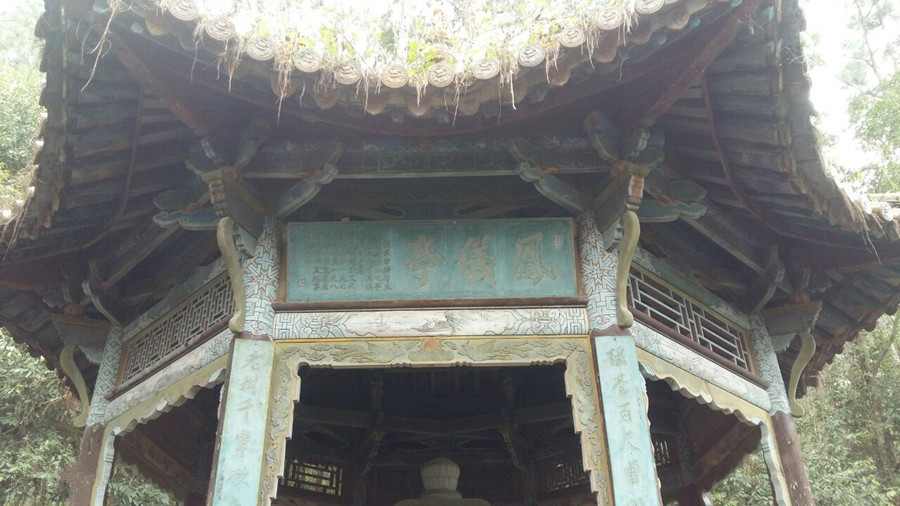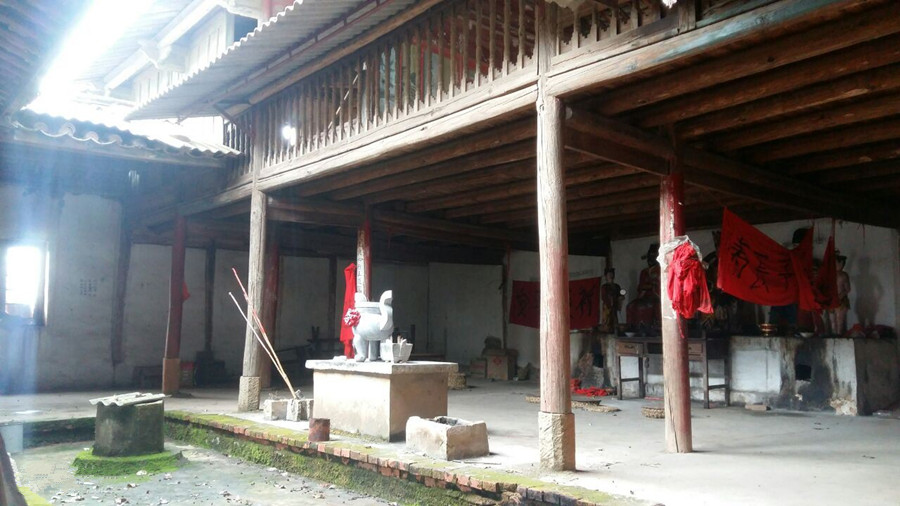
Xingmeng Mongol Ethnic Town in Tonghai County, Yuxi
Xingmeng Mongolian Township (兴蒙蒙古族乡) is situated west of Tonghai County’s urban area in Yuxi City, Yunnan Province. It shares borders with Hexi Town to the east, and is adjacent to both Hexi Town and Jiulong Street to the south. Connecting westward with Hexi Town, and northward adjoining Hexi Town, the township government is located 10 kilometers from the county seat. As of the end of 2019, the township had a registered population of 5,871 people, covering a total area of 4.77 square kilometers.
Xingmeng Township (兴蒙乡), located in Tonghai County (通海县), Yuxi (玉溪), is the only Mongol (蒙古族) ethnic enclave in Yunnan Province (云南省). This unique township has been home to Mongolian people for over 700 years and preserves the distinctive culture and traditions of the Mongol ethnic group.
Origins: From Nomadic Herders to Settled Farmers
The Mongol (蒙古族) people of Xingmeng Township (兴蒙乡) are descendants of Mongolian soldiers who followed Kublai Khan (忽必烈) southward during the Yuan Dynasty (元朝) to conquer Yunnan (云南). In 1253, Kublai Khan led his army of 100,000 to pacify Yunnan (云南) and later completed the conquest of the Southern Song Dynasty (南宋).
However, after the fall of the Yuan Dynasty (元朝) in 1381, many Mongol soldiers (蒙古士兵) who remained in Yunnan (云南) could not return to the northern grasslands. They scattered across the region, blending with local communities. A few groups managed to preserve their identity and settled along the western shore of Qiluhu Lake (杞麓湖), avoiding the persecution of the Ming Dynasty (明朝).
Over time, the Mongol (蒙古族) people transitioned from nomadic herders (牧民) to fishermen (渔民) and later to farmers (农民), living along the lakeside and developing a small but thriving community that has preserved its Mongolian identity in Yunnan (云南).
June 2020: Administers 3 administrative villages, with the township government located at Xingmeng Second Group.
Administrative Divisions
- Republic of China (1940): Administered Jiejia Ying, Shishanzui, and Xingmeng.
- 2011: Administered 1 village committee with 6 village groups, encompassing 5 natural villages.
- June 2020: Administers 3 administrative villages: Baigezhong Village, Xiavillage, and Taojiazhui Village; township government at Xingmeng Second Group.
Geographical Environment
Location and Area
Located west of Tonghai County, Yunnan Province, Xingmeng Mongolian Township spans 4.77 square kilometers. It is surrounded by Hexi Town to the east, south, west, and north.
Terrain and Landforms
Slopes northwest to southeast. Includes Fengshan, with highest point at 1800 meters altitude, and lowest at 1792 meters in Taojiazhui.
Hydrology
Belongs to Pearl River Basin, with major rivers: Hongqi River, Baodao Gou, Xigan Gou, Qingshui Gou, and Zhongcun River. Total river length is 6.8 kilometers.
Natural Resources
In 2011, cultivated area was 3,312 mu.
A Unique Mongolian Culture in Yunnan
Language: Kachuo Language (喀卓语)
The Mongolian people of Xingmeng (兴蒙) speak Kachuo (喀卓语), a unique language that blends Mongolian, the Xingmeng (兴蒙) dialect, Bai (白语), and Yi (彝语) languages. This hybrid language reflects their rich cultural integration and regional influences.
Traditional Clothing: “Three Fold Water” Costume (三叠水)
The traditional dress of the Mongols in Xingmeng (兴蒙) is known as the “Three Fold Water” (三叠水) costume. This attire retains the intricate floral patterns typical of northern Mongolian (北方蒙古族) clothing, while incorporating elements from local ethnic costumes. The attire is divided into three stages, representing the life stages of Mongolian women:
-
One Fold Water: Worn by unmarried women
-
Two Fold Water: Worn by brides
-
Three Fold Water: Worn by elderly women
Cuisine: “Tai Chi Yellow Perch” (太极黄鳝)
Unlike traditional Mongolian (蒙古族) cuisine, which primarily revolves around dairy products like milk tea and cheese (奶茶乳酪), the Mongols of Xingmeng (兴蒙) rely heavily on rice as their staple food. Living by the lake, they are particularly skilled in cooking fish, with one of the signature dishes being “Tai Chi Yellow Perch” (太极黄鳝), a dish where live yellow perch are placed in a pot and heated without removing their bones. The fish coils naturally, forming the shape of “Tai Chi” (太极).
In addition to this delicacy, the community also serves grilled water duck (烤水鸭) and Mongolian-style grilled meat (蒙古风味烤肉) to guests, along with three cups of wine (三杯酒), a symbolic gesture of the highest hospitality.
Festivals: Ancestor Remembrance Festival and Naadam Festival
Ancestor Remembrance Festival (忆祖节)
Held annually on the 20th day of the 6th lunar month (农历六月二十日), the Ancestor Remembrance Festival (忆祖节) is an essential cultural event for the Mongols in Xingmeng (兴蒙). During this time, people of all ages dress in traditional Mongolian (蒙古族) attire and gather at San Sheng Gong (三圣宫), a temple dedicated to their ancestors, including Genghis Khan (成吉思汗), Möngke Khan (蒙哥), and Kublai Khan (忽必烈). The temple houses statues of these figures and displays ancient inscriptions from the Yuan (元朝), Ming (明朝), and Qing (清朝) Dynasties.
The ceremony is led by the village’s most respected elders, who recite the history of the Mongols‘ (蒙古族) migration to Tonghai (通海), and read ritual prayers emphasizing the community’s deep connection to Mongolian ancestry and identity.
Naadam Festival (那达慕)
Every December, Xingmeng Township (兴蒙) hosts its own version of the Naadam Festival (那达慕), a traditional festival originally held by Mongols (蒙古族) in the northern grasslands. The Naadam Festival (那达慕) in Xingmeng (兴蒙) combines traditional Mongolian (蒙古族) activities like archery (射箭), horseback riding (骑马), and wrestling (摔跤) with local festivities, including lantern dances (耍灯笼), dragon dances (舞龙), and shell dances (跳蚌壳).
During the festival, villagers engage in lively celebrations, including barbecuing meats, drinking wine, and dancing, creating a vibrant atmosphere of joy and community spirit.
Xingmeng: “The Land of Architecture”
Preserving Ancient Architecture
Xingmeng Township (兴蒙乡) is also known as the “Land of Architecture” (建筑之乡) in Yunnan (云南). It is home to five villages, each with a significant number of Ming (明朝) and Qing (清朝) era buildings. These buildings, crafted by local artisans, feature intricate designs and are known for their durability and aesthetic appeal.
As you walk through the village, you’ll see old brick walls, carved doors, and flying eaves, all of which breathe life into the historic atmosphere. The streets, lined with vibrant flowers, green vines, and old buildings, feel timeless yet full of vitality.
One of the standout locations is the Kachuo Hundred Flowers Lane (喀卓百花巷), where the lane is lined with blooming flowers, and the red walls are covered with vines. The narrow alleys echo with the sounds of daily life, where villagers move about, basking in the sun or having a casual chat.
The community has preserved its traditions, living harmoniously within these historical surroundings, giving visitors a glimpse of how history and modern life coexist in Xingmeng (兴蒙).
The Mongol Ethnic Town (蒙古族乡) in Xingmeng Township (兴蒙乡), Tonghai County (通海县), Yuxi (玉溪), offers a fascinating look at how Mongolian (蒙古族) culture has adapted and thrived in southern China. From their unique language and clothing to their distinct culinary traditions and vibrant festivals, the Mongols of Xingmeng (兴蒙) continue to maintain their heritage while embracing the local culture, creating a rich and diverse cultural landscape for visitors to explore.
Transportation
- 2011: 319 Provincial Road Yutong Expressway, 3.74 kilometers, dual four-lane, connects Yuxi and Kunming.
- Local Roads: 4 county and township roads totaling 10.36 kilometers.
Historical and Cultural Significance
Origin of the Name
Changed from “Xinmeng” to “Xingmeng” in 1984, symbolizing hope for Mongolian ethnic group prosperity.
Folk Art
Includes cigarette box dance, four-string dance, color lira dance, Mopi Yi drum dance, caodun dance, chopstick dance, and Yi legend “Hebai Zu Da Wang”.

 7 Days GolfingTour
7 Days GolfingTour
 8 Days Group Tour
8 Days Group Tour
 8 Days Yunnan Tour
8 Days Yunnan Tour
 7 Days Shangri La Hiking
7 Days Shangri La Hiking
 11 Days Yunnan Tour
11 Days Yunnan Tour
 6 Days Yuanyang Terraces
6 Days Yuanyang Terraces
 11 Days Yunnan Tour
11 Days Yunnan Tour
 8 Days South Yunnan
8 Days South Yunnan
 7 Days Tea Tour
7 Days Tea Tour
 8 Days Muslim Tour
8 Days Muslim Tour
 12 Days Self-Driving
12 Days Self-Driving
 4 Days Haba Climbing
4 Days Haba Climbing
 Tiger Leaping Gorge
Tiger Leaping Gorge
 Stone Forest
Stone Forest
 Yunnan-Tibet
Yunnan-Tibet
 Hani Rice Terraces
Hani Rice Terraces
 Kunming
Kunming
 Lijiang
Lijiang
 Shangri-la
Shangri-la
 Dali
Dali
 XishuangBanna
XishuangBanna
 Honghe
Honghe
 Kunming
Kunming
 Lijiang
Lijiang
 Shangri-la
Shangri-la
 Yuanyang Rice Terraces
Yuanyang Rice Terraces
 Nujiang
Nujiang
 XishuangBanna
XishuangBanna
 Spring City Golf
Spring City Golf
 Snow Mountain Golf
Snow Mountain Golf
 Stone Mountain Golf
Stone Mountain Golf




















